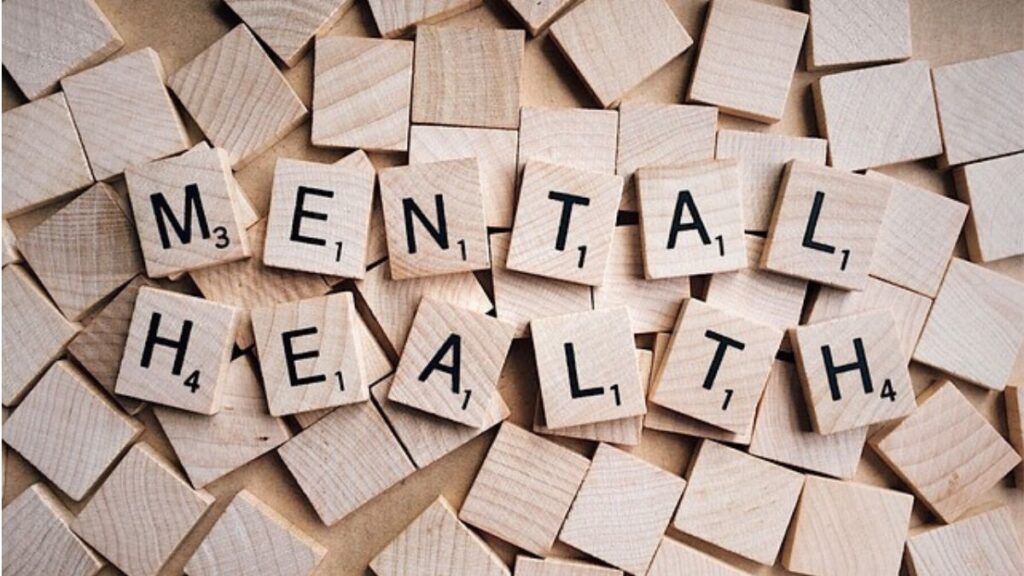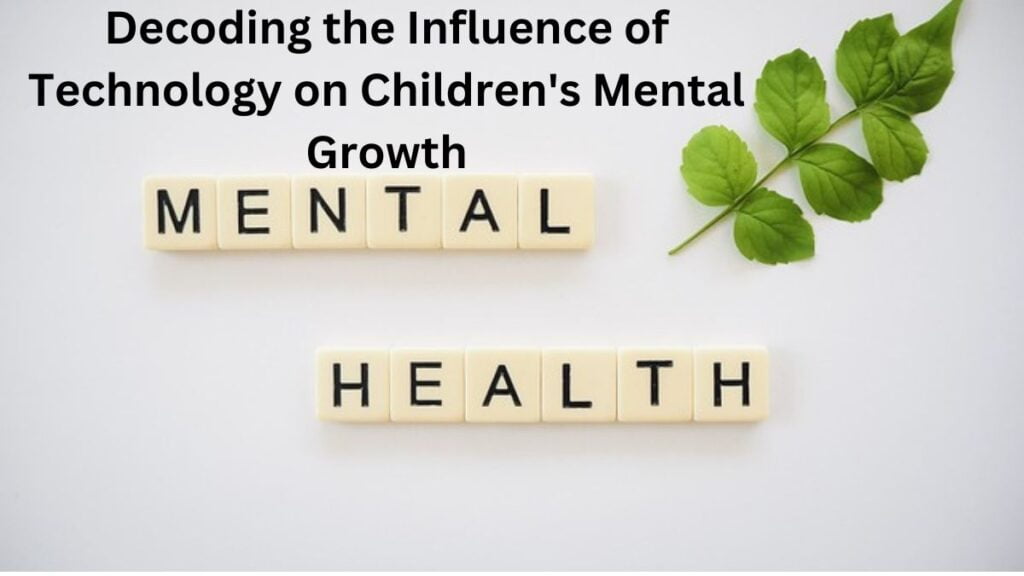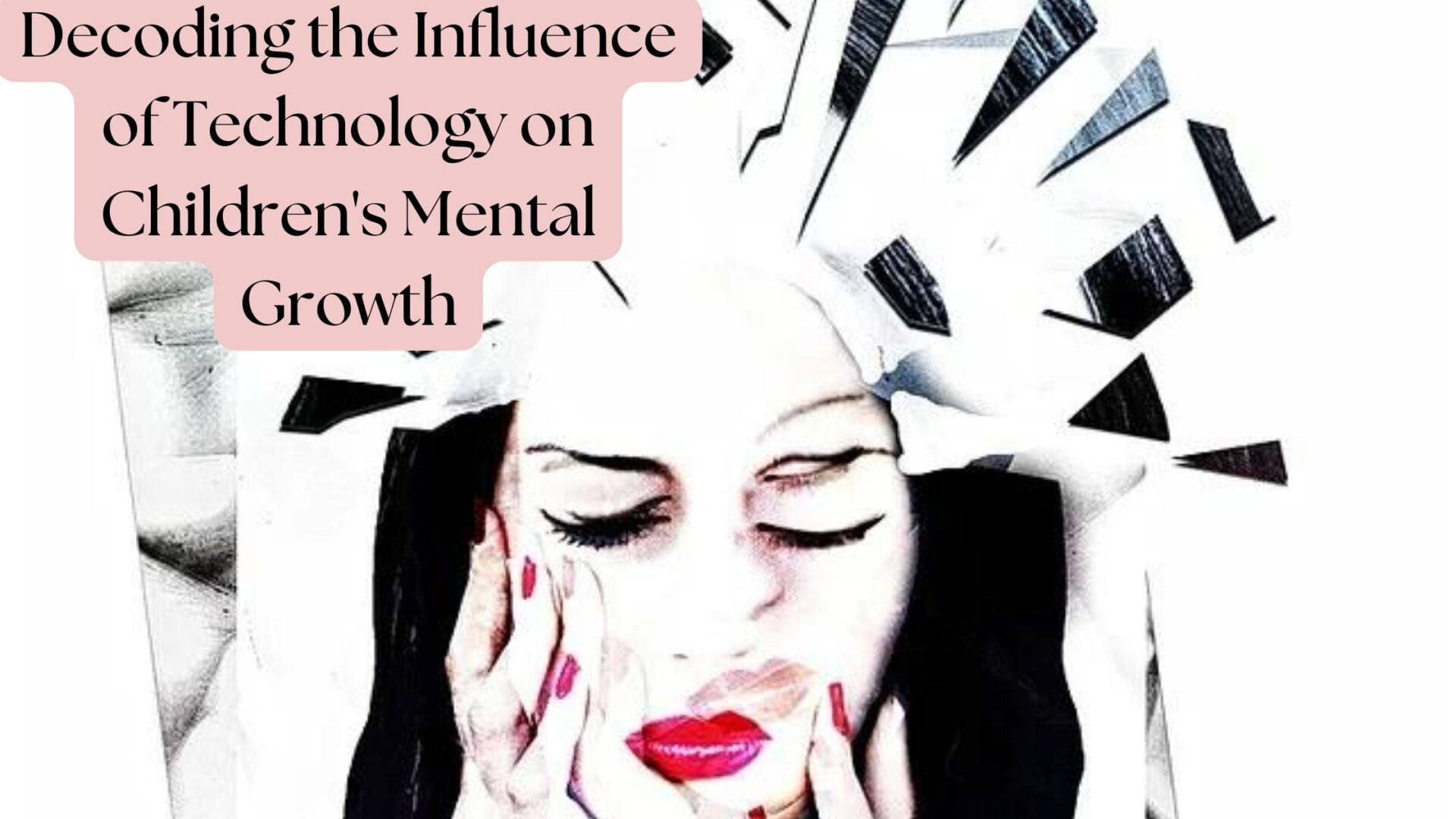Introduction:-
Beyond the Screen: Decoding the Influence of Technology on Children’s Mental Growth

In the digital age, where screens have become an integral part of our daily lives, understanding the influence of technology on children’s mental growth is more crucial than ever. “Beyond the Screen: Decoding the Impact of Technology on Children’s Mental Growth” delves into the multifaceted relationship between kids and technology, exploring both the positive and negative aspects that shape their cognitive and emotional development.
How the Influence of Technology affects children’s mental health?
The impact of the Internet on children’s mental health is a complex and multifaceted issue, with both positive and negative aspects. Here are some ways in which the Internet can affect children’s mental health:
Positive Effects:
- Access to Information and Learning: The Internet provides a wealth of information, educational resources, and learning opportunities. Children can access a variety of educational materials, helping them with schoolwork and fostering a love for learning.
- Social Connection: Social media and online communication platforms allow children to connect with friends, family, and peers. This can be especially beneficial for maintaining relationships, especially in cases where physical distance is a factor.
- Creativity and Expression: The Internet provides platforms for children to express themselves creatively through art, writing, and other forms of digital media. This can boost self-esteem and encourage individuality.
Negative Effects:
- Cyberbullying: Online harassment and cyberbullying can have severe consequences on children’s mental health. Bullying via social media or other online platforms can lead to anxiety, depression, and other emotional issues.
- Social Comparison: Social media platforms often promote a culture of comparison, where children compare their lives to others. This can lead to feelings of inadequacy, low self-esteem, and increased anxiety.
- Exposure to Inappropriate Content: The Internet provides easy access to content that may be inappropriate for children. Exposure to violent, explicit, or disturbing content can negatively impact their mental well-being.
- Sleep Disruption: Excessive screen time, especially before bedtime, can interfere with sleep patterns. Poor sleep quality can contribute to mood swings, irritability, and difficulty concentrating.
- Online Addiction: Excessive use of the Internet, video games, or social media can lead to addiction-like behaviors. This can result in neglect of real-world relationships, physical health issues, and a decline in academic performance.
- Privacy Concerns: Children may not fully understand the implications of sharing personal information online. This can lead to privacy issues, including identity theft and online exploitation, affecting their mental well-being.
Mitigation Strategies:
- Parental Guidance: Parents should actively guide and monitor their children’s online activities, ensuring age-appropriate content and addressing any concerns promptly.
- Digital Literacy Education: Teaching children about digital literacy, online etiquette, and the potential risks of the Internet can empower them to make informed decisions.
- Balanced Screen Time: Encouraging a healthy balance between online and offline activities can help prevent issues like addiction and sleep disruption.
- Open Communication: Fostering open communication with children about their online experiences and challenges allows parents to provide support and guidance.
- Promoting Positive Online Behavior: Emphasizing kindness, respect, and empathy in online interactions helps create a positive online environment and reduces the risk of cyberbullying.
It’s important to recognize that the impact of the Internet on children’s mental health varies based on factors such as age, individual differences, and the quality of online experiences. Balancing the positive aspects of the Internet with responsible use and parental guidance is key to promoting a healthy online environment for children.
How does social media cause anxiety?
Social media can contribute to anxiety in several ways, and the relationship between social media use and anxiety is a complex and multifaceted issue. Here are some ways in which social media can potentially contribute to anxiety:

1. Social Comparison:
- Highlight Reels: Social media often presents a curated version of people’s lives, showcasing the positive aspects. This can lead to unrealistic comparisons and feelings of inadequacy as individuals may feel their own lives don’t measure up to what they see online.
- Fear of Missing Out (FOMO): Constant exposure to others’ activities and experiences can contribute to FOMO, where individuals feel anxious about missing out on social events or opportunities.
2. Cyberbullying:
- Online Harassment: Social media platforms can be breeding grounds for cyberbullying, where individuals may experience harassment, humiliation, or threats. This can lead to anxiety and emotional distress.
3. Validation and Self-Esteem:
- Social Approval: The pursuit of likes, comments, and followers can become a measure of self-worth. Lack of social validation or negative online interactions can impact self-esteem and contribute to anxiety.
- Comparison Culture: The constant comparison to others’ online achievements and lifestyles can create a sense of inadequacy and pressure to conform to certain standards.
4. Information Overload:
- Negative News: Constant exposure to negative news and distressing events on social media can contribute to heightened anxiety levels, as individuals may feel overwhelmed by the negativity in their feeds.
5. Digital Addiction:
- Excessive Screen Time: Spending excessive time on social media may lead to addiction-like behaviors, negatively impacting mental health. The fear of missing updates or being disconnected can contribute to anxiety.
6. Privacy Concerns:
- Online Safety: Concerns about privacy, data breaches, or online exploitation can contribute to anxiety. Children and teens, in particular, may feel vulnerable to online threats.
7. Unrealistic Beauty Standards:
- Body Image Issues: Social media often promotes unrealistic beauty standards. Constant exposure to edited images and body ideals can contribute to body image issues and anxiety about physical appearance.
8. Political and Social Stress:
- Polarization: Social media can amplify political and social tensions, exposing individuals to divisive discussions and conflicting opinions. This can contribute to stress and anxiety, especially during intense or controversial events.
Mitigation Strategies:
- Limit Screen Time: Establishing healthy limits on social media use can help prevent excessive exposure and reduce the risk of anxiety.
- Curate Your Feed: Unfollow accounts that contribute to negative feelings or comparison. Curate a feed that promotes positivity and inspiration.
- Digital Detox: Taking regular breaks from social media, known as a digital detox, can help reset mental well-being and reduce anxiety.
- Mindful Consumption: Encourage mindful consumption of social media by being aware of emotional responses and actively engaging with positive content.
- Build Real-Life Connections: Foster real-life connections and activities to balance online interactions and reduce dependence on social media for social validation.
- Seek Support: If anxiety becomes overwhelming, seeking support from friends, family, or mental health professionals is crucial. Discussing concerns openly can help alleviate stress.
It’s important to recognize that the impact of social media on mental health can vary among individuals, and not everyone will experience anxiety in the same way. Developing a healthy relationship with social media involves being mindful of its effects and taking proactive steps to ensure a positive online experience.
Conclusion:
“Beyond the Screen: Decoding the Impact of Technology on Children’s Mental Growth” concludes with a call for a holistic approach. By understanding both the advantages and challenges posed by technology, parents and caregivers can empower children to navigate the digital landscape responsibly, ensuring a positive impact on their overall mental well-being.
FAQs:
- How does technology impact children’s mental growth?
- Technology can both positively and negatively affect children’s mental growth. It can enhance cognitive skills, creativity, and problem-solving abilities, but excessive screen time can lead to issues like attention problems, sleep disturbances, and social withdrawal.
- What are the recommended guidelines for children’s screen time?
- The American Academy of Pediatrics suggests limiting screen time for children aged 2 to 5 to one hour per day of high-quality programming. For older children, it’s recommended to prioritize healthy activities like physical play, social interaction, and adequate sleep over screen time.
- What are some signs that technology may be negatively impacting a child’s mental well-being?
- Signs include decreased interest in offline activities, irritability when not using technology, difficulty concentrating, disrupted sleep patterns, and withdrawal from family and friends.
- How can parents promote healthy technology use for their children?
- Parents can set limits on screen time, encourage a balance between online and offline activities, participate in their children’s online experiences, and provide guidance on safe and appropriate technology use.
- Are there any positive aspects of technology for children’s mental growth?
- Yes, technology can provide educational opportunities, foster creativity through digital media, facilitate social connections, and help children develop digital literacy skills essential for the modern world.
References:
- Rideout, V. J., & Robb, M. B. (2019). The Common Sense Census: Media Use by Kids Age Zero to Eight 2019. Common Sense Media.
- American Academy of Pediatrics. (2016). Media and Young Minds. Pediatrics, 138(5), e20162591.
- Twenge, J. M., Campbell, W. K., & Carter, N. T. (2017). Declines in Unprotected Sex and Perceived Risks of Pregnancy and Sexually Transmitted Diseases Among High School Students in the United States, 1991–2015. Archives of Sexual Behavior, 46(2), 579–581.








